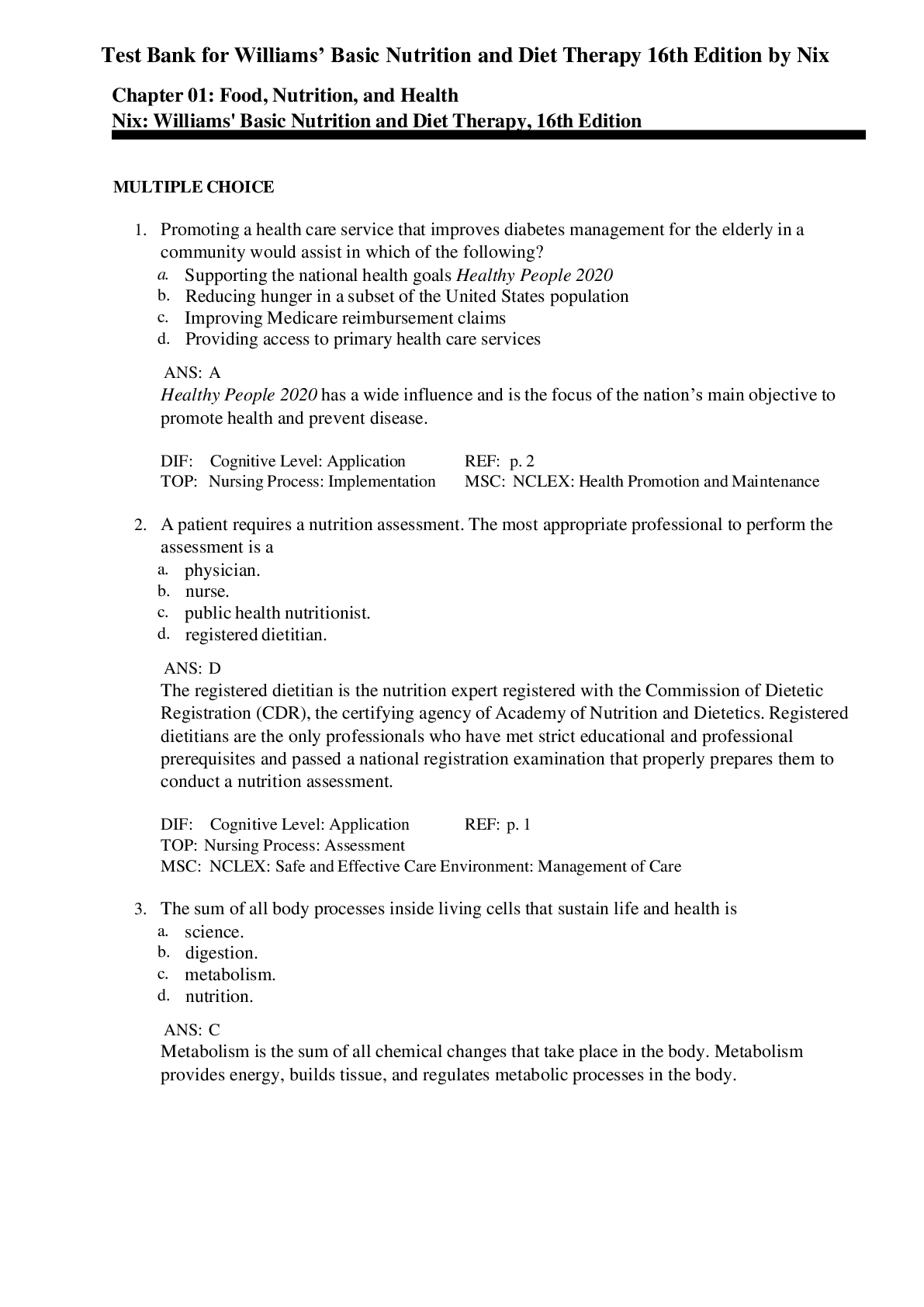CHAPTER 53: VITAMINS AND MINERALS EXAM REVIEW SOLUTION UPDATE 2022
Document Content and Description Below
CHAPTER 53: VITAMINS AND MINERALS EXAM REVIEW SOLUTION UPDATE 2022 A patient takes vitamin A daily because of a family history of keratomalacia. Which findings should the nurse use to determine wh... ether the patient's vitamin A intake is excessive? (Select all that apply.) A. Itching B. Dry skin C. Restlessness D. Night sweats E. Hypokalemia F. Dysmenorrhea - ANS-A. Itching B. Dry skin D. Night sweats Clinical indicators of excessive vitamin A include dry skin, itching, and night sweats, along with lethargy, malaise, abdominal pain, hypomenorrhea, and hypercalcemia. A female patient tells the nurse that she takes three tablets of calcium 500 mg with vitamin D 200 mg for osteoporosis and also takes a multivitamin daily. The nurse instructs the patient to report which symptoms? A. Fatigue and headache B. Polyuria and flushing C. Constipation and flatus D. Pleuritis and cramping - ANS-A. Fatigue and headache Under the current regimen, the patient is taking more than 600 mg of vitamin D daily, because multivitamins usually contain 50 to 200 mg of vitamin D. Although most toxic effects of vitamin D occur in children, vitamin D is a fat-soluble vitamin and can therefore accumulate in the body and reach toxic levels. For this reason, the nurse instructs the patient to report clinical indicators of vitamin D toxicity such as fatigue, headache, and abdominal cramping. The upper limit for vitamin D toxicity is quite high, however, and this patient would likely benefit from additional vitamin D. A patient is going to start chemotherapy. As a means of helping prevent drug interactions, which vitamin does the nurse instructs the patient to avoid during chemotherapy? A. Vitamin C B. Vitamin D C. Vitamin E D. Vitamin B12 - ANS-C. Vitamin E Vitamin E, a powerful antioxidant, kills cancer cells through an oxidative process; however, the nurse instructs the patient to avoid vitamin E supplements during chemotherapy or radiation because megadosing of vitamin E interferes with these therapies. A patient has a vitamin K deficiency. Which plasma protein should the nursemonitor for deficiency? A. Globulin B. Albumin C. Lipoprotein D. Prothrombin - ANS-D. Prothrombin Because vitamin K is critical in the hepatic synthesis of clotting factors, the nurse monitors the patient for a deficiency in prothrombin by analyzing the serum prothrombin level. Other plasma proteins produced by the liver include globulin, albumin, and lipoprotein. Globulins are antibodies; albumin is the primary plasma protein responsible for oncotic pressure; and lipoproteins transport lipids in the blood. A patient with a long history of alcoholism has a vitamin B6 deficiency. To which laboratory tests should the nurse refer to evaluate the therapeutic effects of vitamin B6 supplementation? A. Hematocrit B. Reticulocytes C. Mean corpuscular hemoglobin D. Erythrocyte sedimentation rate - ANS-C. Mean corpuscular hemoglobin The nurse analyzes the hemoglobin concentration in the erythrocytes (mean corpuscular hemoglobin, or MCH) to determine the therapeutic effect of vitamin B6 supplementation because vitamin B6 is important in the synthesis of heme, the oxygen-carrying molecule found in hemoglobin. The nurse reviews the MCH because it quantifies the concentration of hemoglobin in erythrocytes. Vitamin B6 is not involved in erythrocyte production, so the hematocrit and reticulocytes counts, as well as the sedimentation rate, are unrelated. A patient with a history of GI bleeding as a result of peptic ulcer disease is started on famotidine (Pepcid) upon admission. Which action is the nurse's priority in helping prevent anemia in the patient? A. Providing poultry, fish, and eggs B. Administering parenteral iron C. Providing lean meat and cheese D. Administering vegetables and nuts - ANS-A. Providing poultry, fish, and eggs The patient is receiving an H2 blocker, which inhibits the secretion of hydrochloric acid by gastric parietal cells; as a result, the patient is at risk for pernicious anemia because the lack of hydrochloric acid in the stomach inhibits the absorption of vitamin B12, because of a lack of intrinsic factor (secreted in gastric juices). To help prevent this anemia, the nurse provides rich dietary sources of vitamin B12 including poultry, fish, and eggs. Iron is not indicated in the prevention or treatment of pernicious anemia. Lean meat and cheese provide magnesium and vegetables, and nuts provide B6. A patient is recovering from extensive thoracic surgery. Which foods should the nurse include in the patient's diet to promote healing?.... [Show More]
Last updated: 1 year ago
Preview 1 out of 4 pages
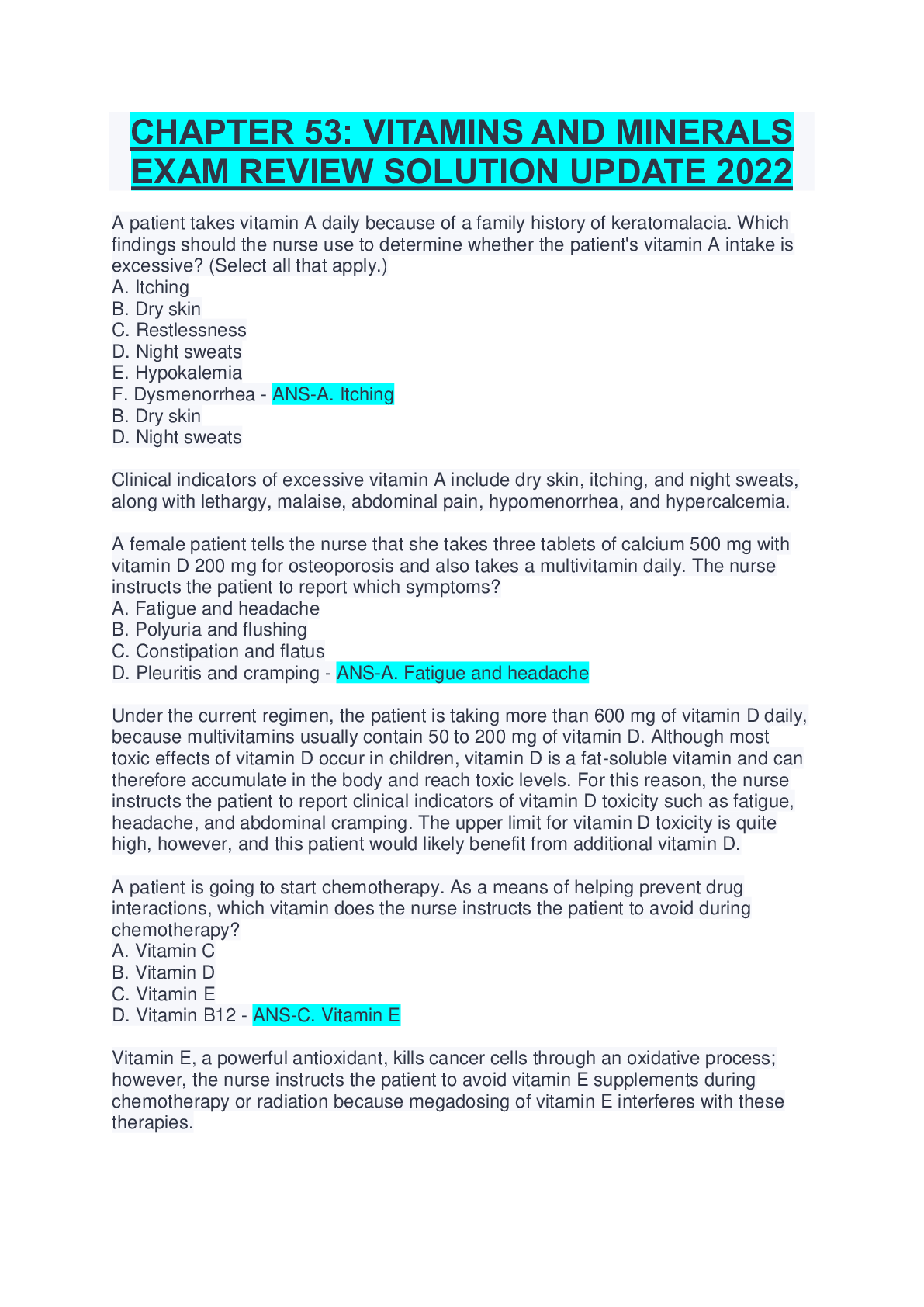
Buy this document to get the full access instantly
Instant Download Access after purchase
Add to cartInstant download
We Accept:

Reviews( 0 )
$9.00
Document information
Connected school, study & course
About the document
Uploaded On
Sep 26, 2022
Number of pages
4
Written in
Additional information
This document has been written for:
Uploaded
Sep 26, 2022
Downloads
0
Views
40


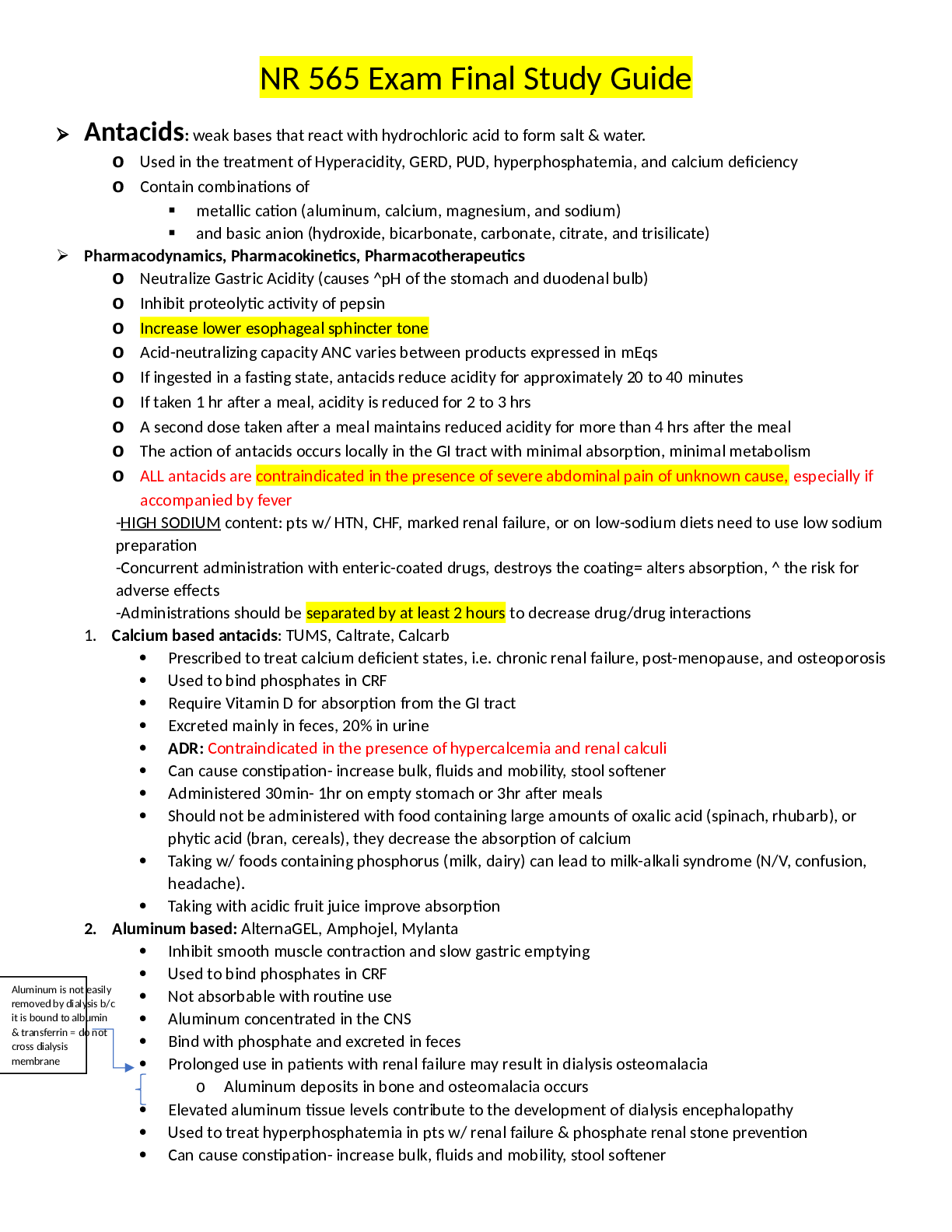

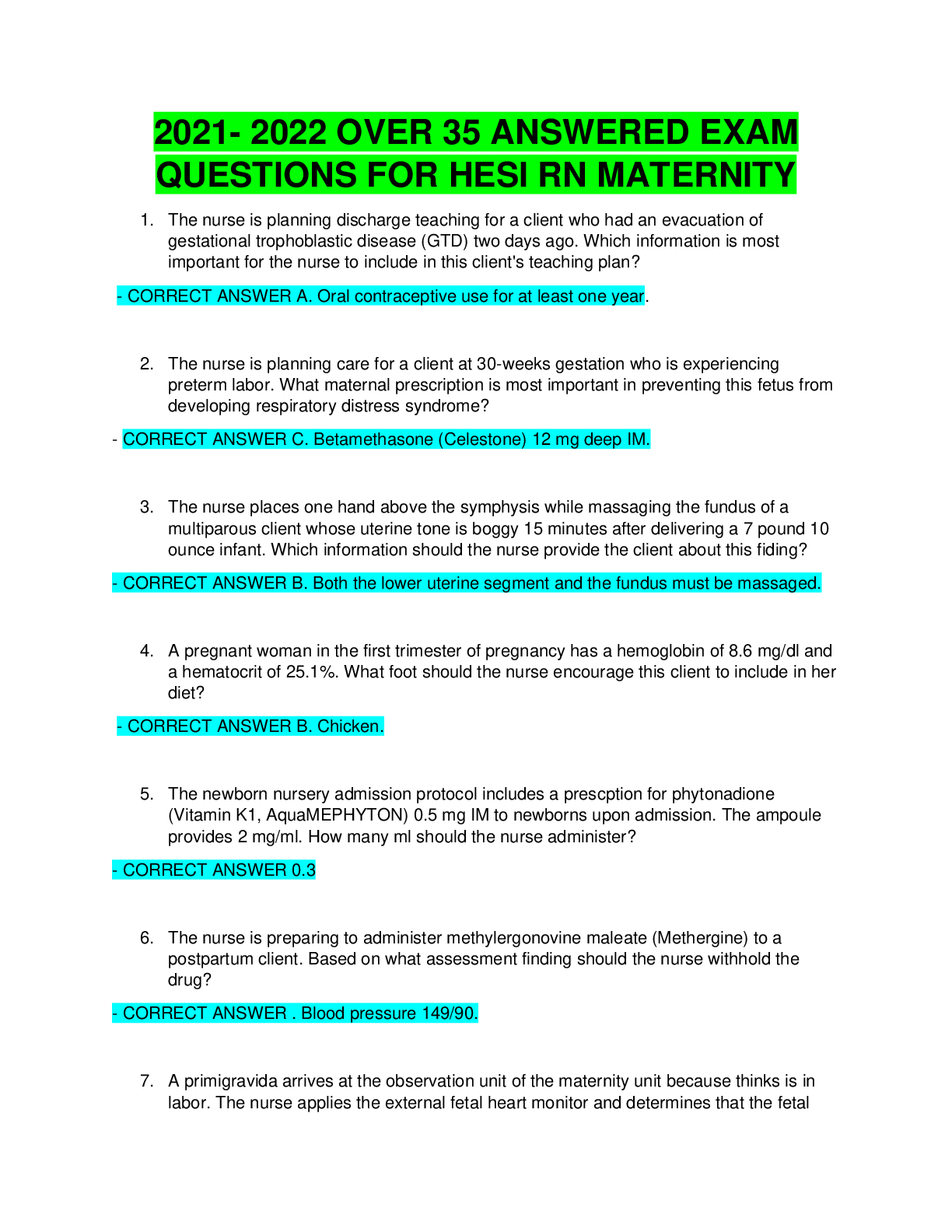
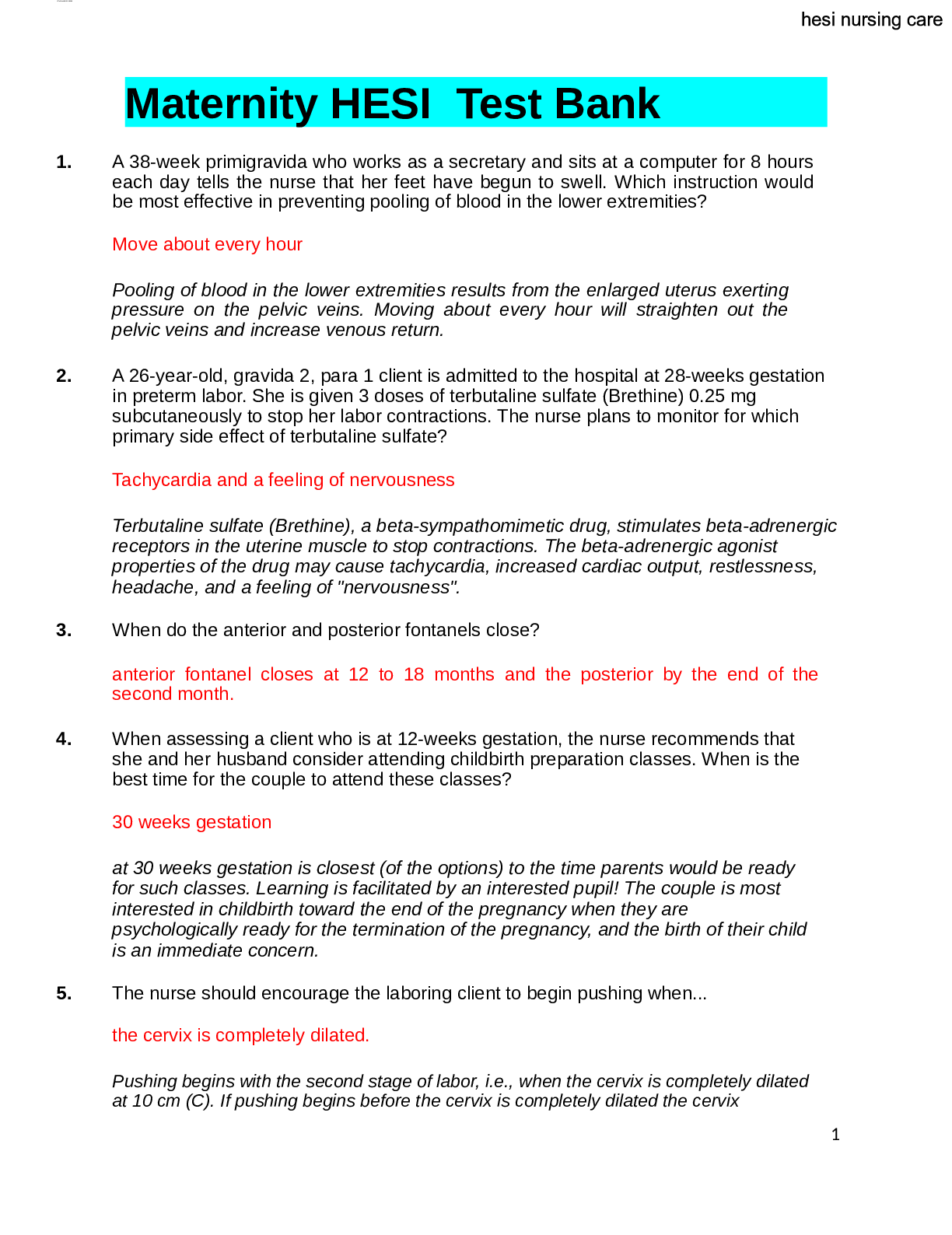
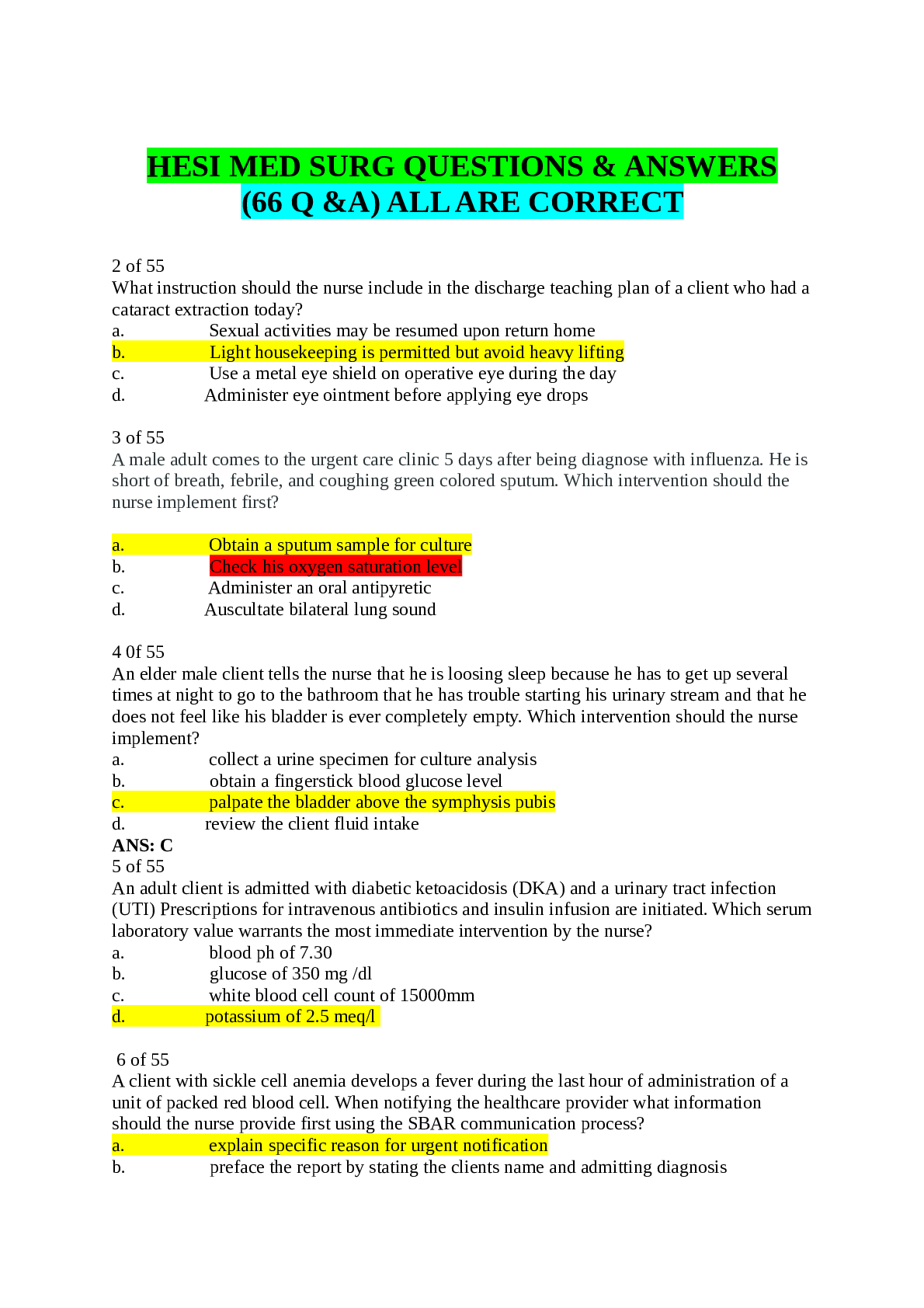
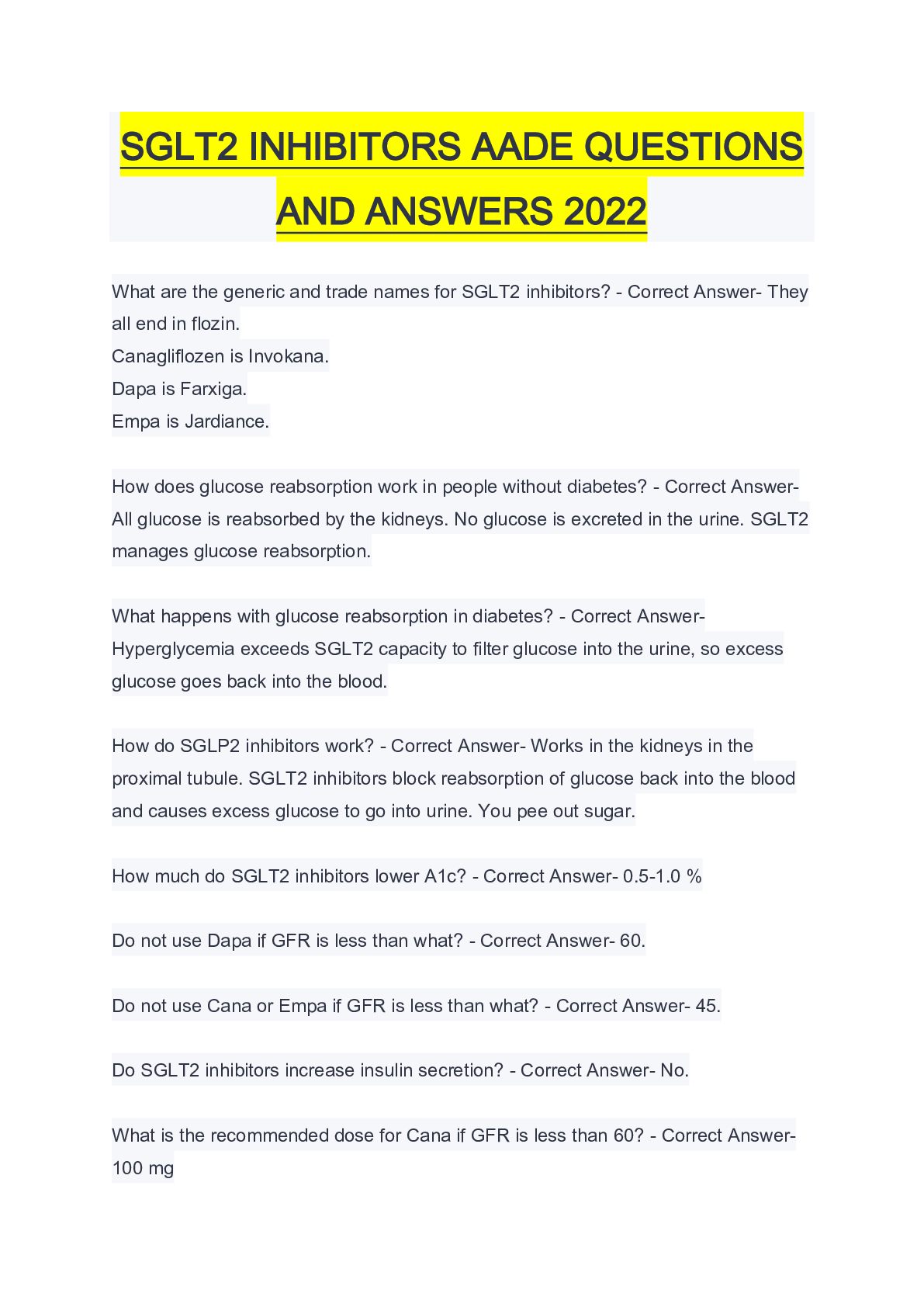
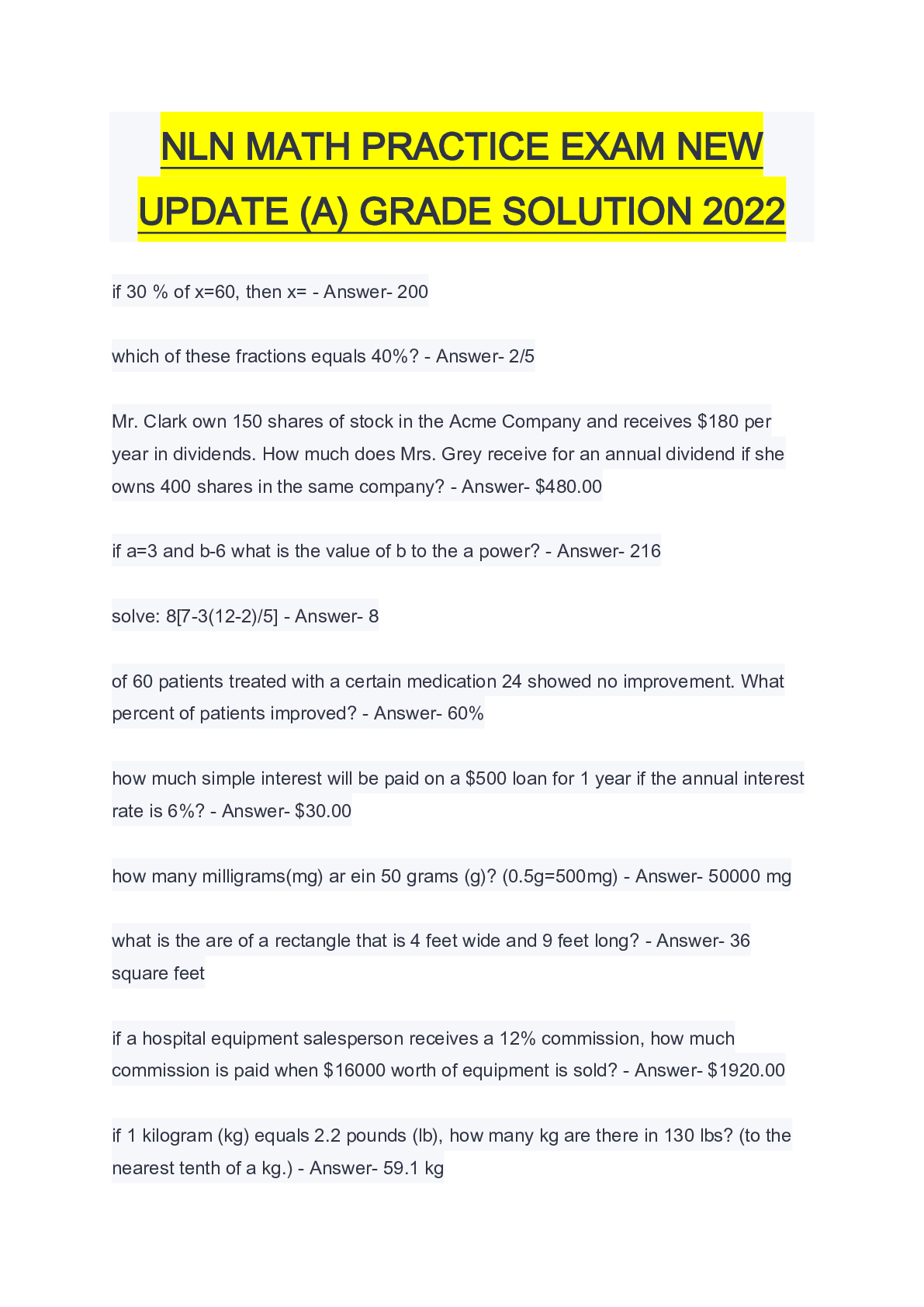
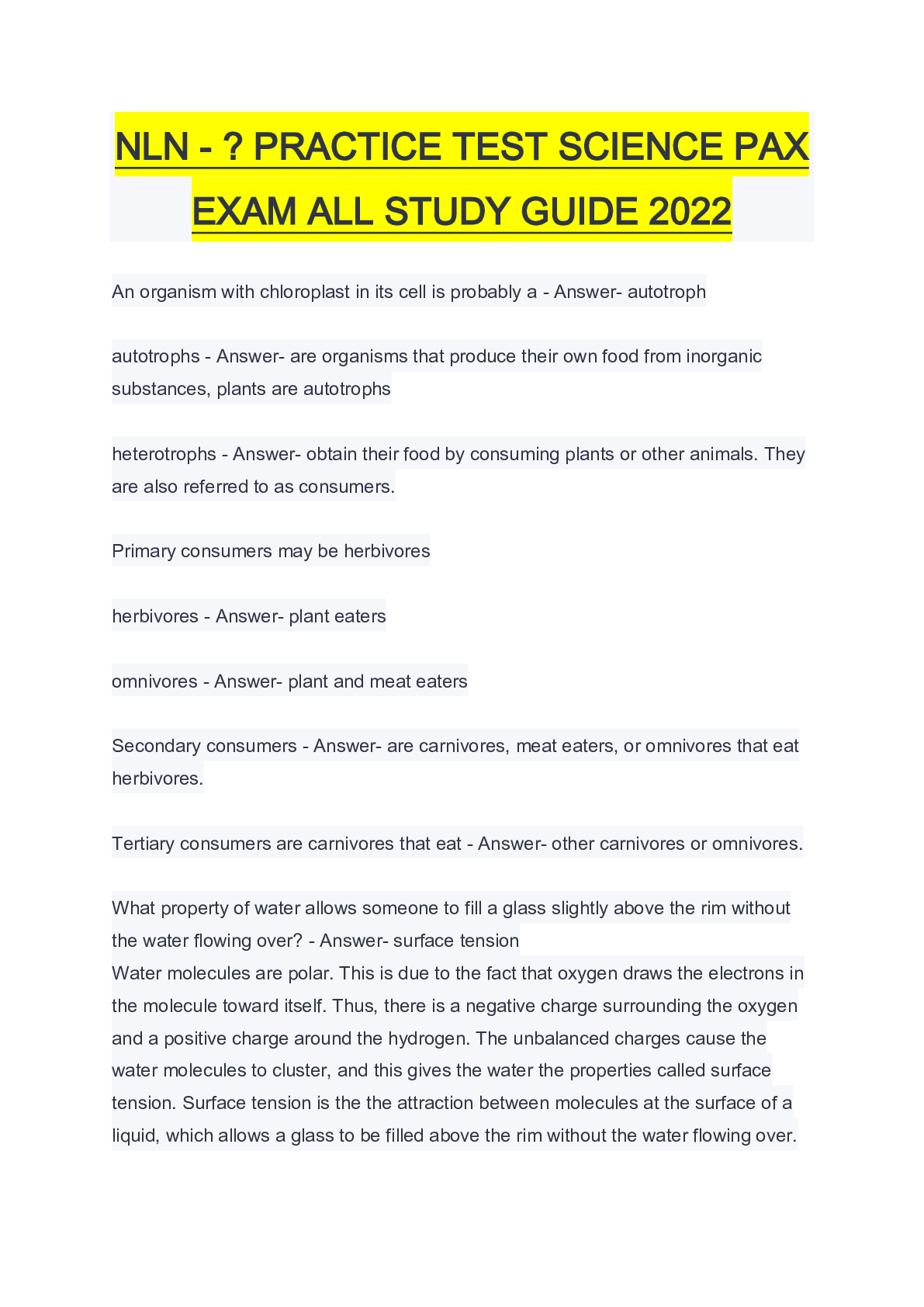
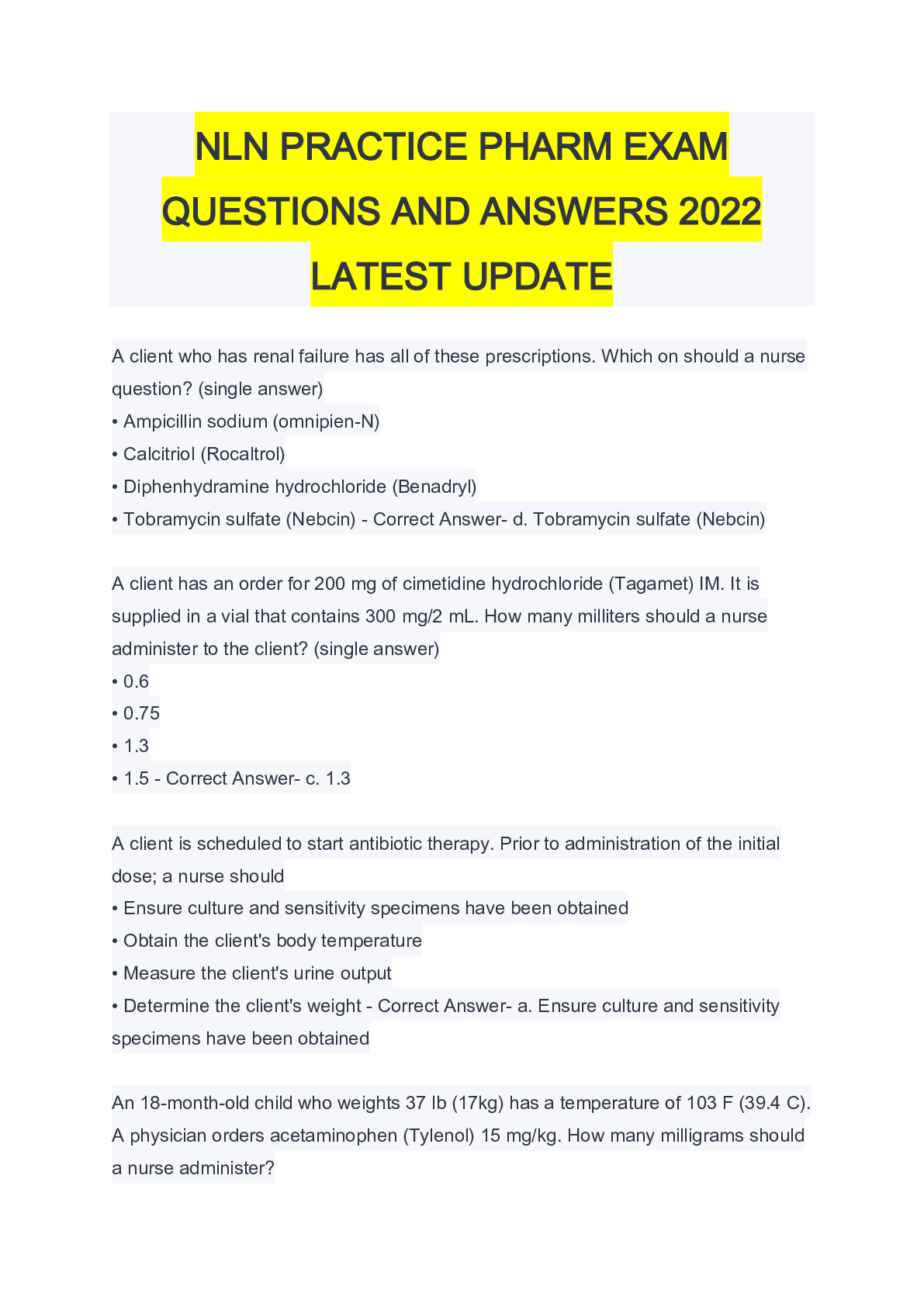
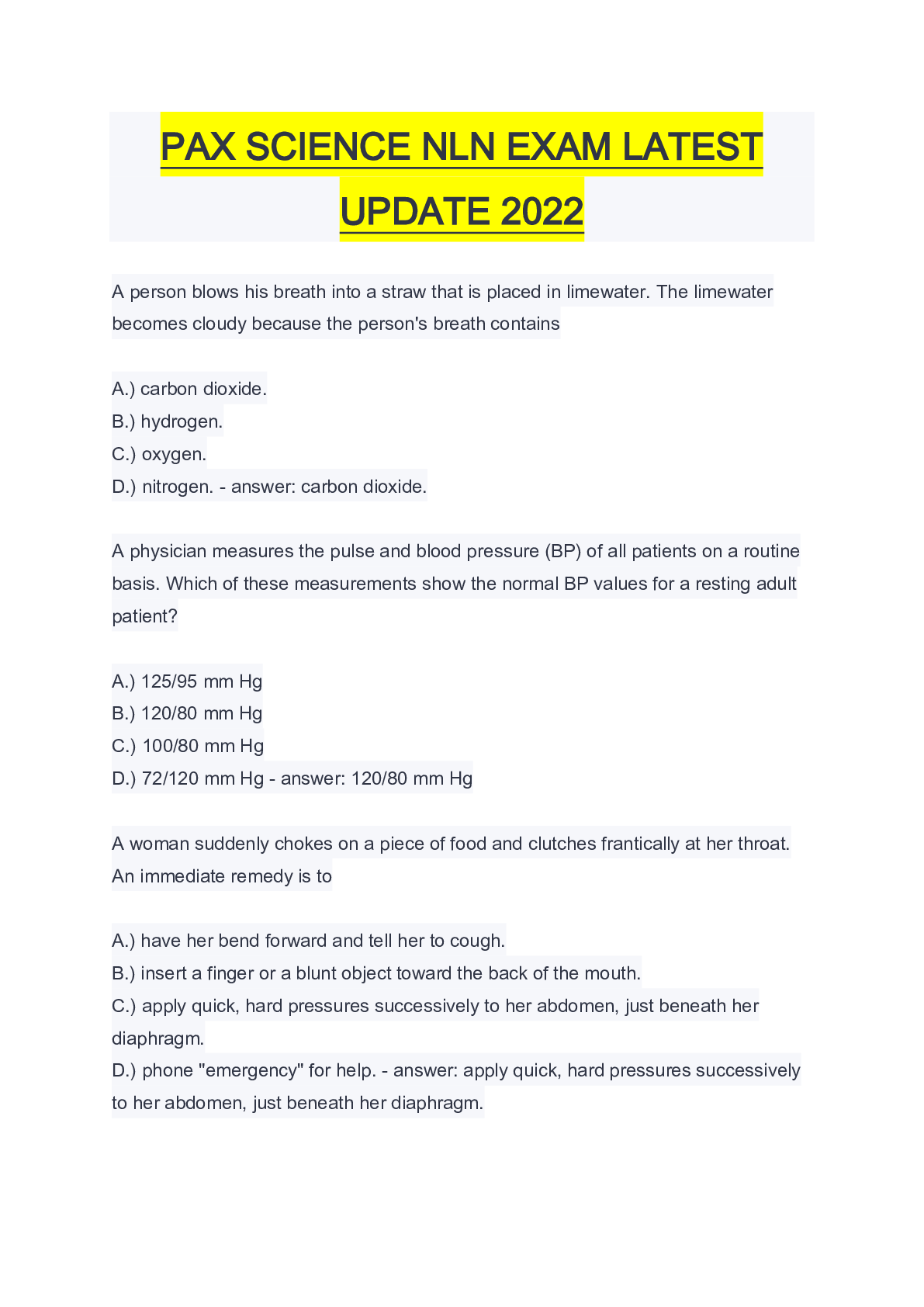
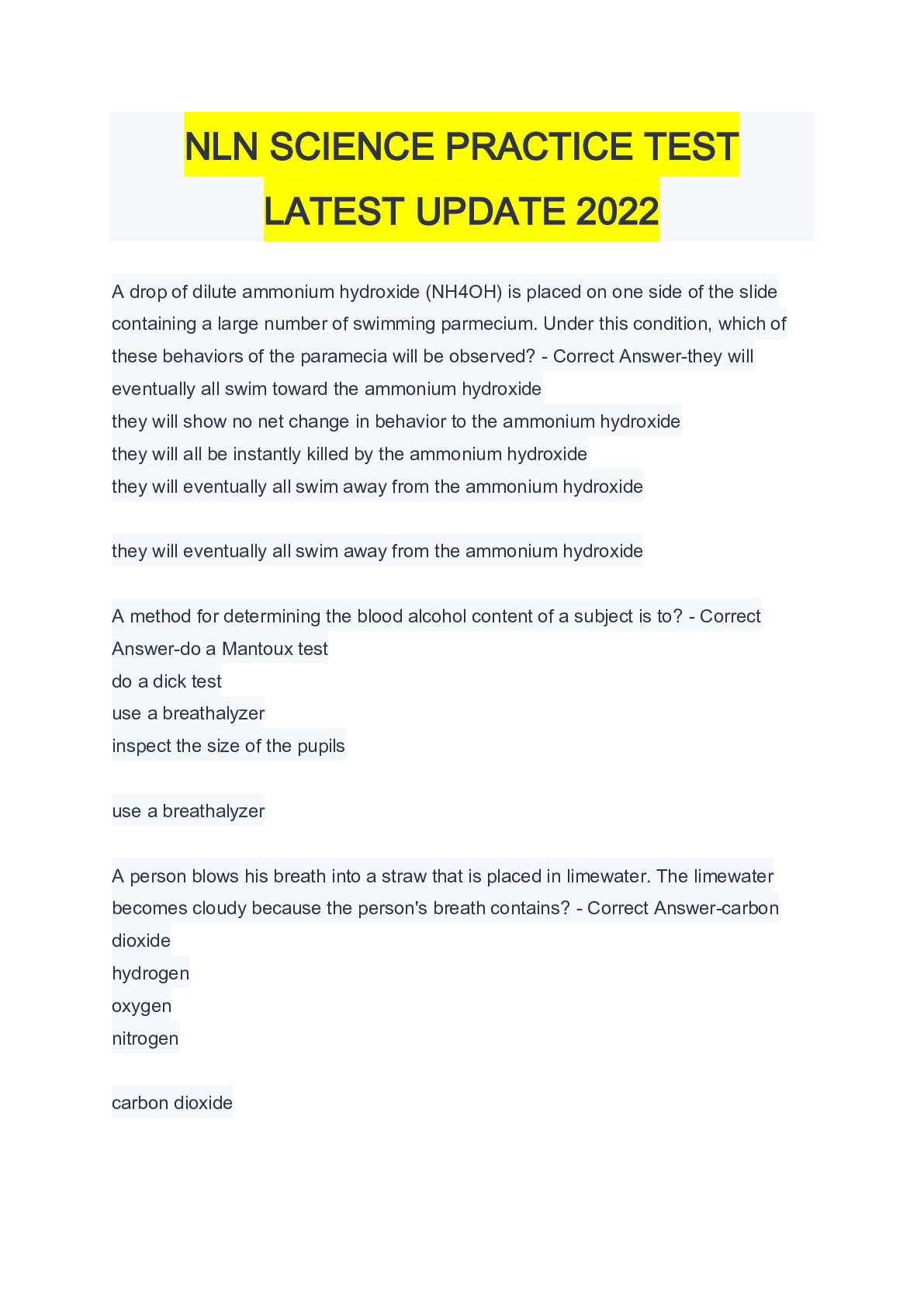

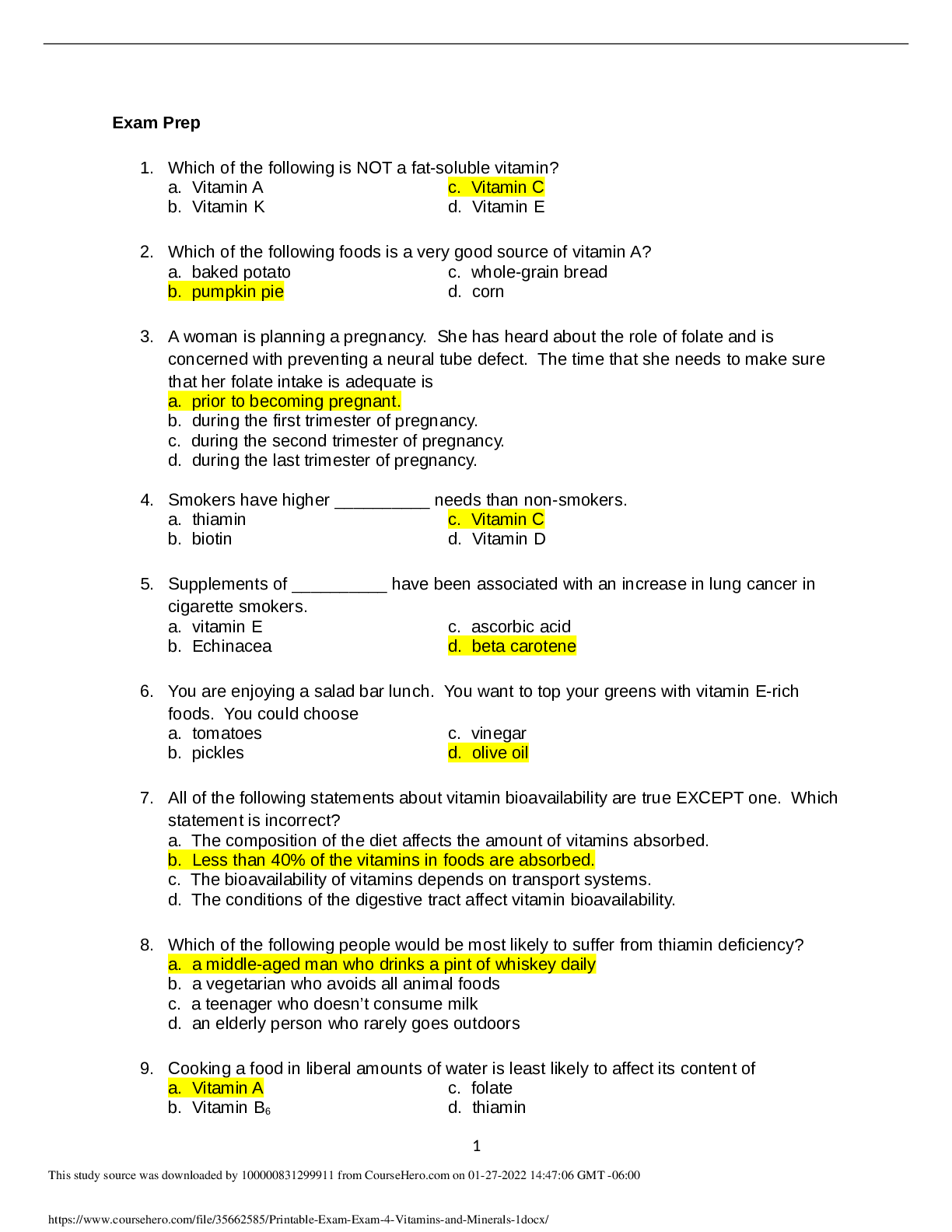
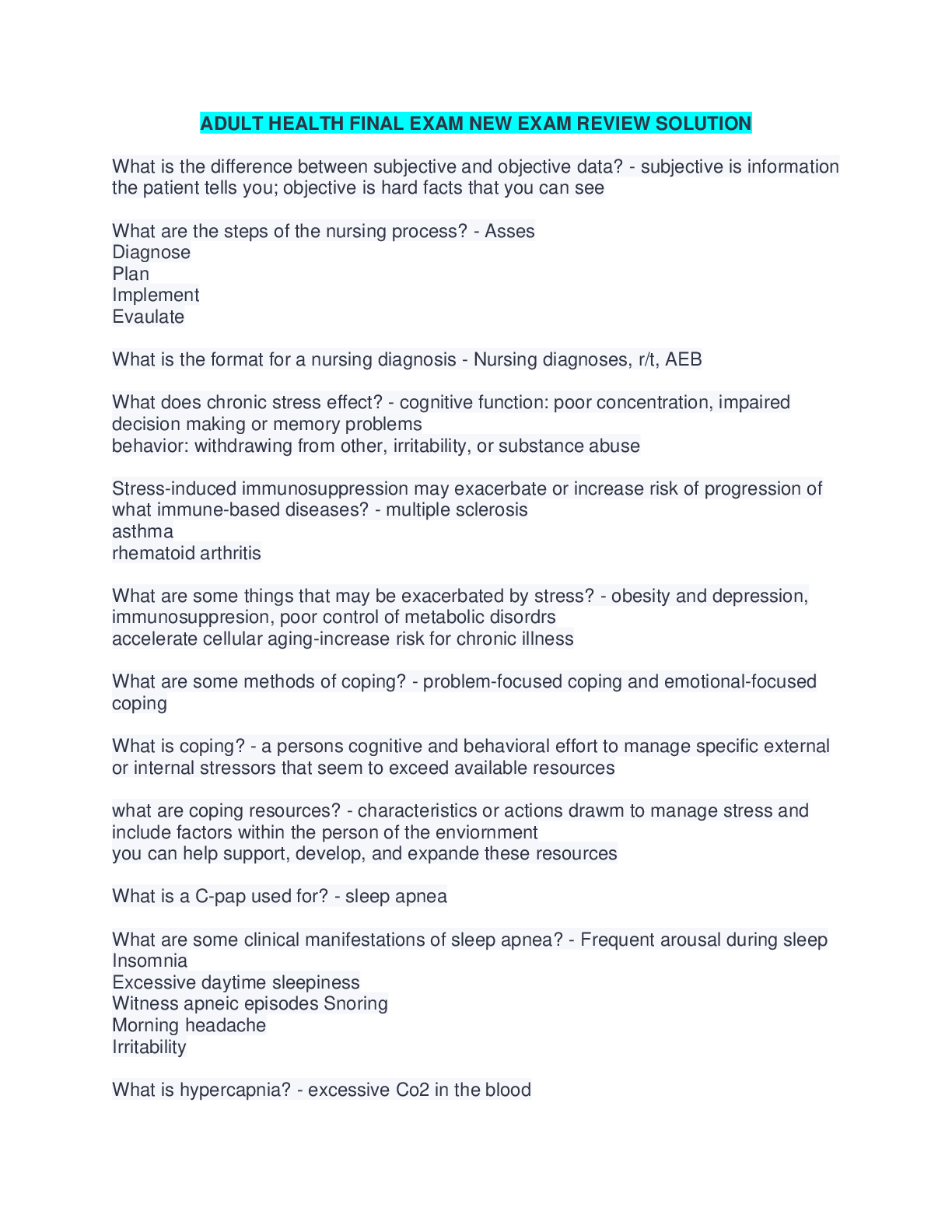
 EXAM REVIEW SOLUTION 2022.png)
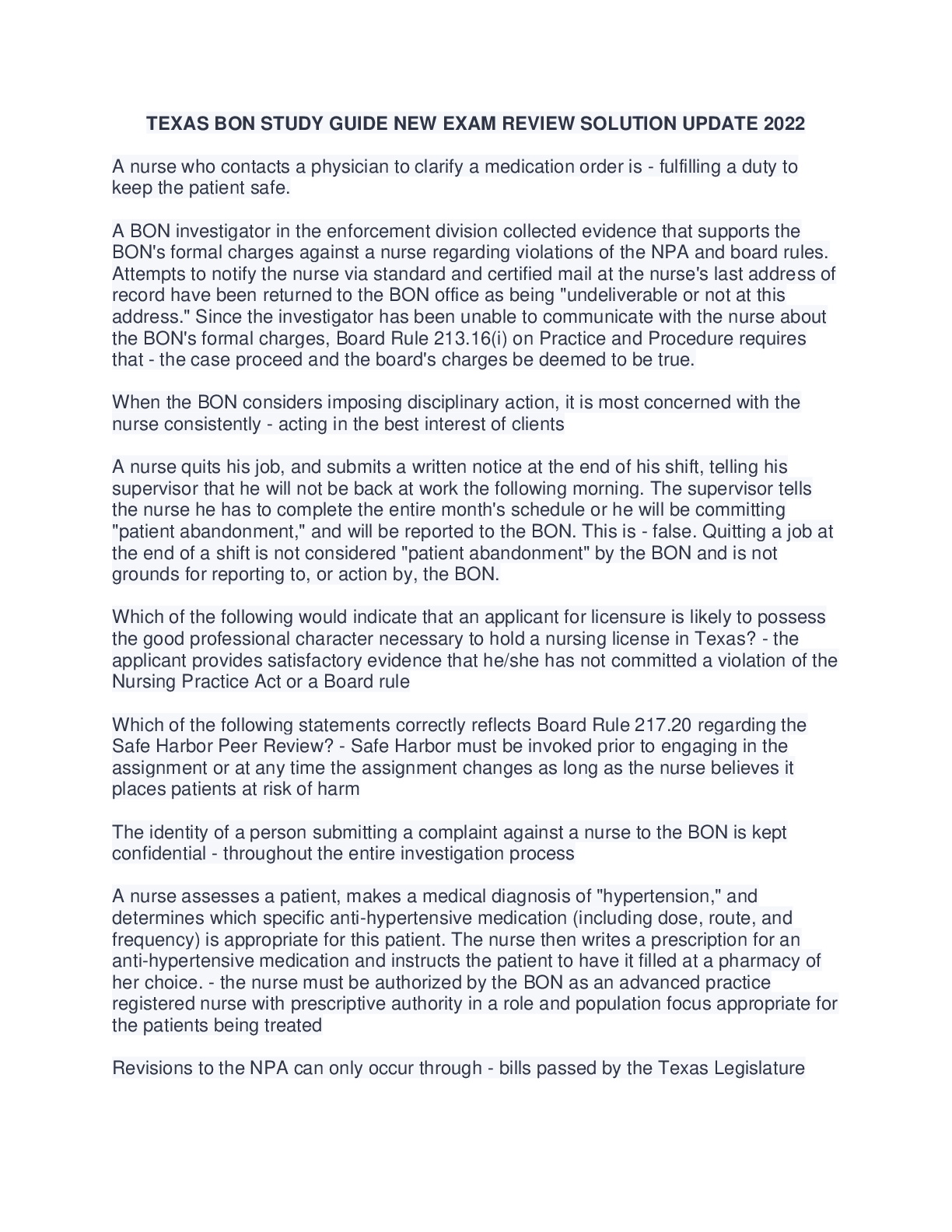

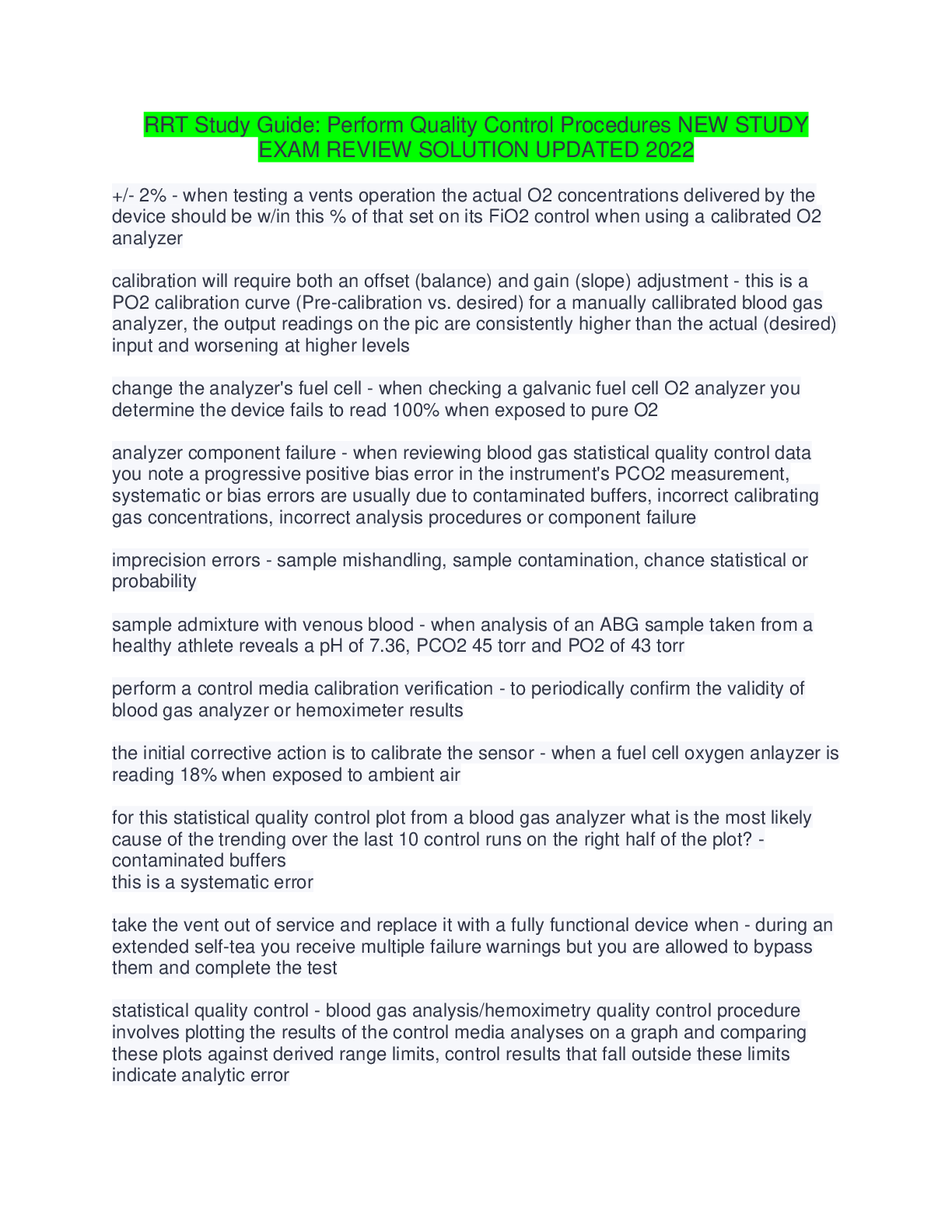

 Module 4 Vitamins and Minerals.png)
